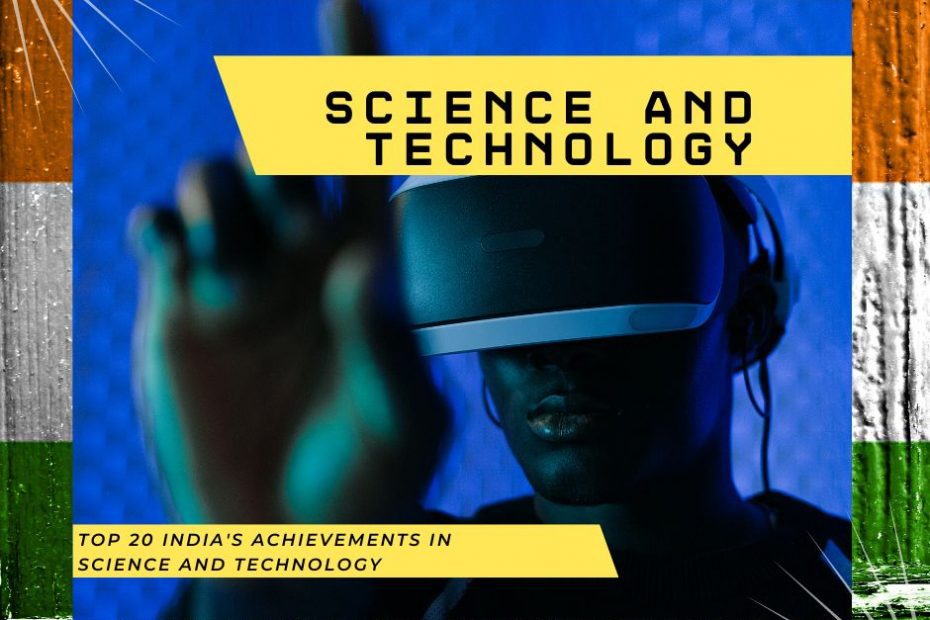Today Askerweb.com being a Science and Technology related Indian website will discuss the top 20 India’s achievements in science and technology
- 1951: The first Indian Institute of Technology is set up in Kharagpur. There are a total of 23 IITs in India. Total IIT seats in India for an undergraduate degree are 16000+. To pursue B.Tech, B.Arch or B. Plan courses from IITs, candidates need to crack JEE Advanced.
2. 1956: India’s first atomic reactor, Apsara, goes critical at the Bhabha Atomic Research Centre.
3. 1962: Tarapur Atomic Power Station (T.AP.S.) was the first nuclear power plant in India. The construction of the plant was started in 1962 and the plant went operational in 1969. The 320 MW Tarapur nuclear power station housed two 160 MW boiling water reactors (BWRs), the first in Asia.
4. 1969: Indian Space Research Organisation (Isro) was founded.
5. 1973: Tiger conservation programme, Project Tiger was launched in April 1973 by the Government of India. The project aims at ensuring a viable population of Bengal tigers in their natural habitats, protecting them from extinction, and preserving areas of biological importance.
6. 1974: India’s first successful nuclear bomb was tested on 18 May 1974 at Pokhran Test Range (PTR), in Rajasthan. Under the code name Smiling Budha, Pokhran-I was also the first confirmed nuclear weapons test by a nation outside the five permanent members of the United Nations Security Council. India claimed this test was a “peaceful nuclear explosion”.

7. 1975: India launched its first satellite into space on April 19, 1975. Named after the ancient Indian astronomer, Aryabhata was constructed by the Indian Space Research Organisation (ISRO) and rode into space aboard a Kosmos-3M launch vehicle from Kapustin Yar, the then Soviet Union’s rocket launch and development site.
8. 1975: The Satellite Instructional Television Experiment (SITE) began on August 1, 1975. For the first time, 2,400 black-and-white community TV sets came alive in as many villages, clustered in six states across the country. The project, undertaken by ISRO, was designed and implemented in collaboration with the National Aeronautics and Space Administration (NASA) of the United States.
9. 1978: The first test tube baby in India and the second one in the world was born in Calcutta on October 3, 1978. At that time, Dr Subhash Mukhopadhyay claimed that Durga, the test-tube baby born under his care to Ms Bela Agrawal was the first baby conceived via in-vitro fertilisation. This was just 67 days after the world’s first test-tube baby, Marie Louise Brown, was born in the UK. Unfortunately, Dr Mukhopadhyay’s claims were not believed by the scientific community. After repeated failed attempts to convince his colleagues of his achievement, Dr Mukhopadhyay hanged himself on June 19, 1981. It was only in 2005 that his achievement and contributions to science were recognised.
10. 1983: In 1983, India’s first scientific base station in Antarctica was established, about 2,500 kilometres from the South Pole. Named Dakshin Gangotri, it was constructed during the third Indian expedition to Antarctica. The station was built in record time-eight weeks by an 81-member team, and was powered by 1983: The Government of India launched the Integrated Guided Missile Development Program in 1983 to achieve self-sufficiency in the development and production of a wide range of ballistic missiles, surface-to-air missiles etc. Prithvi was the first missile to be developed under the program.
11. 1984: The squadron leader and test pilot with the Indian Air Force Rakesh Sharma became the first Indian to fly into space. He flew into space in 1984 as part of a joint programme between the Indian Space Research Organisation (ISRO) and the Soviet Intercosmos space program. While replying to then prime minister Indira Gandhi’s question about how India looked from space, he said “Saare Jahan Se accha”.
12. 1988: After Dakshin Gangotri base was rendered inoperable, a new research station, Maitri, which served as India’s first permanent station at the South Pole-was constructed about 90 km away, in 1988. It serves as a base for front-ranking research and developments in basic and environmental sciences.
13. 1998: India secretly conducted a series of underground nuclear tests with five bombs in Pokhran, Rajasthan. The first successful test took place in 1974. After Operation Shakti-98 then Prime Minister Atal Bihari Vajpayee declared India a full-fledged nuclear state.
14. 2008: India’s space programme came of age in 2008, with the first unmanned space mission, Chandrayaan-1, reaching the moon. For this, Chandrayaan-1 carried six indigenous Indian scientific instruments, as well as two from the National Aeronautics and Space Administration (NASA), three instruments from the European Space Agency and another from the Bulgarian Academy of Sciences. 2009: India formally launched it’s first indigenously designed and constructed ballistic missile submarine (SSBN), the INS Arihant, the culmination of a project that began in the 1960s.
15. 2014: On 27 March 2014, the World Health Organization (WHO) declared India a polio-free country, since no cases of wild polio have been reported for five years.
16. 2016: Union Cabinet granted, in principle approval for building The world’s third advanced Laser Interferometer Gravitational-wave Observatory (LIGO-India) in India.
17. 2016: Indian Space Research Organisation (ISRO) scripted history by successfully launching a record 104 satellites, including India’s earth observation satellite, on a single rocket from the spaceport in Sriharikota. This was the highest number of satellites ever launched in a single mission
18. 2017: The first developmental flight (GSLV Mkill-D1) of India’s heavy lift launch vehicle GSLV Mk-Ill was successfully conducted today (June 05, 2017) evening from Satish Dhawan Space Centre SHAR, Sriharikota with the launch of the GSAT-19 satellite.
19. 2019: Mohali traffic police in Punjab launched India’s first wireless 3-D Smart Traffic Signal System called Intelights.
20. 2019: India launched its second lunar mission, Chan drayman-2, from Sriharikota. The indigenously de-signed spacecraft comprising an orbiter, a lander and a rover – is expected to touch down on the moon’s surface in the early hours of the morning of September 7.




